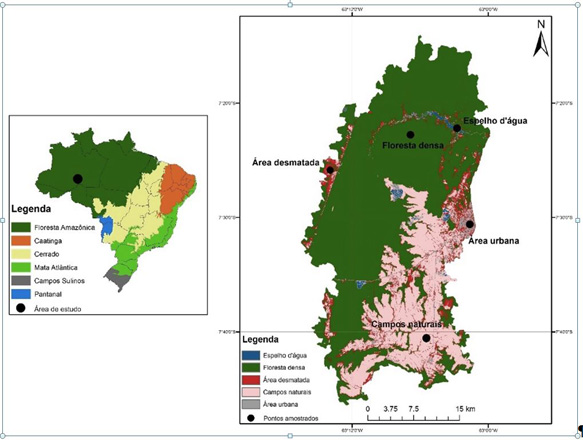Analysis of metallic, pesticide, physico-chemical and microbiological parameters of waters near the Dr. John Penido Dam, Juiz de Fora, MG
Keywords:
impacts, preservation, supply source, water quality, watershed.
Abstract
The Dr. John Penido Dam is the main source of water supply of the city of Juiz de Fora, located in southeastern Brazil. This study analyzed metals, agro toxics, and some physico chemical and microbiological parameters in water samples taken near the dam, and checked their conformity to limits specified in the pertinent legislation (Brasil, 2004; 2011; CONAMA, 2005). Eight samples were collected at five points of the reservoir between July 2011 and March 2013. The following physicochemical and microbiological parameters were analyzed: water temperature, dissolved oxygen, pH, conductivity, color, turbidity, total solids, demand biochemical oxygen, nitrate, nitrite, ammonia, total nitrogen, total phosphorus, chlorophyll a, total and thermo-tolerant coliforms. Every agro toxic mentioned in Ordinances MS/GM 518/2005 and 2.914/2011 of the Ministry of Health (Brazil, 2004; 2011) was analyzed. The total and dissolved metals tested included: copper, chromium, cadmium, lead, nickel, zinc, manganese, iron, sodium, potassium and calcium. The correlation between the results was accomplished using data mining technique (Data Mining). The results showed that the levels of metals in the water are below the CONAMA parameters, with exceptions of iron and zinc. The following other parameters also showed disagreement: biochemical oxygen demand, dissolved oxygen, total phosphorus and thermo-tolerant coliforms. Agro toxics were also below the limits of quantification of the methods employed, and were therefore within the limits established by the Ministry of Health Ordinances. The results and correlations indicate that the weathering, runoff and forms of use and occupation of the watershed interfere with the aquatic ecosystem. This study provides information useful to planning the preservation and restoration of the water quality of the supply source.
Published
20/10/2015
Issue
Section
Papers
Authors maintain the copyrights for their work. However, they grant rights of first publication to Ambiente e Agua - An Interdisciplinary Journal of Applied Science. In compensation, the journal can transfer the copyrights, allowing non-commercial use of the article including the right of sending the article to other data bases or publication media. The journal uses the CC BY 4.0 license"






